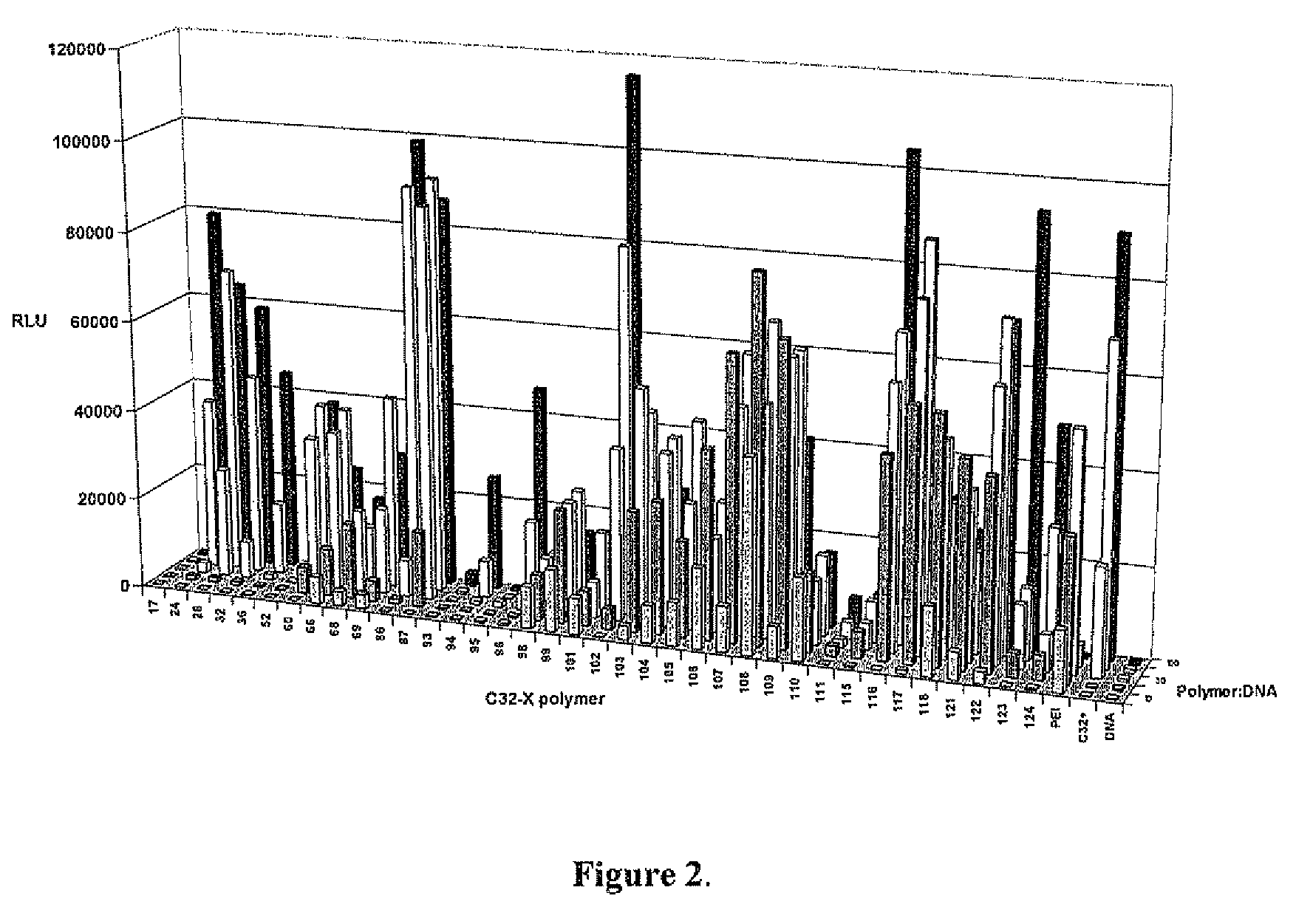End-modified poly(beta-amino esters) and uses thereof
a technology of end-modified polymers and amino esters, which is applied in the direction of drug compositions, genetic material ingredients, capsule delivery, etc., can solve the problems that cationic polymers such as poly(lysine) and pei can be significantly cytotoxi
- Summary
- Abstract
- Description
- Claims
- Application Information
AI Technical Summary
Benefits of technology
Problems solved by technology
Method used
Image
Examples
example 1
End-Modified Poly(Beta-Amino Esters) for Gene Delivery
Introduction
[0189]Incorporation of new genetic elements into cells is a promising strategy for the treatment of many inherited and acquired genetic disorders. In order for gene-based therapeutics to be clinically applicable, a safe and efficient delivery system for DNA needs to be developed. Modified viruses are the most heavily researched agents but still suffer from many problems that include a limited carrying capacity, the potential for insertional mutagenesis, and clearance by the immune system. Various cationic polymers have been developed as an alternative since many can condense DNA and mediate cellular uptake. An additional benefit of synthetic polycations is the potential to alter the structure for optimal gene delivery while minimizing the cytotoxic effects.
[0190]The most common polycations used for gene delivery are poly-L-lysine (PLL) and polyethylenimine (PEI). High molecular weight derivatives of both polymers have...
PUM
| Property | Measurement | Unit |
|---|---|---|
| diameter | aaaaa | aaaaa |
| diameter | aaaaa | aaaaa |
| mean diameter | aaaaa | aaaaa |
Abstract
Description
Claims
Application Information
 Login to View More
Login to View More - R&D
- Intellectual Property
- Life Sciences
- Materials
- Tech Scout
- Unparalleled Data Quality
- Higher Quality Content
- 60% Fewer Hallucinations
Browse by: Latest US Patents, China's latest patents, Technical Efficacy Thesaurus, Application Domain, Technology Topic, Popular Technical Reports.
© 2025 PatSnap. All rights reserved.Legal|Privacy policy|Modern Slavery Act Transparency Statement|Sitemap|About US| Contact US: help@patsnap.com



